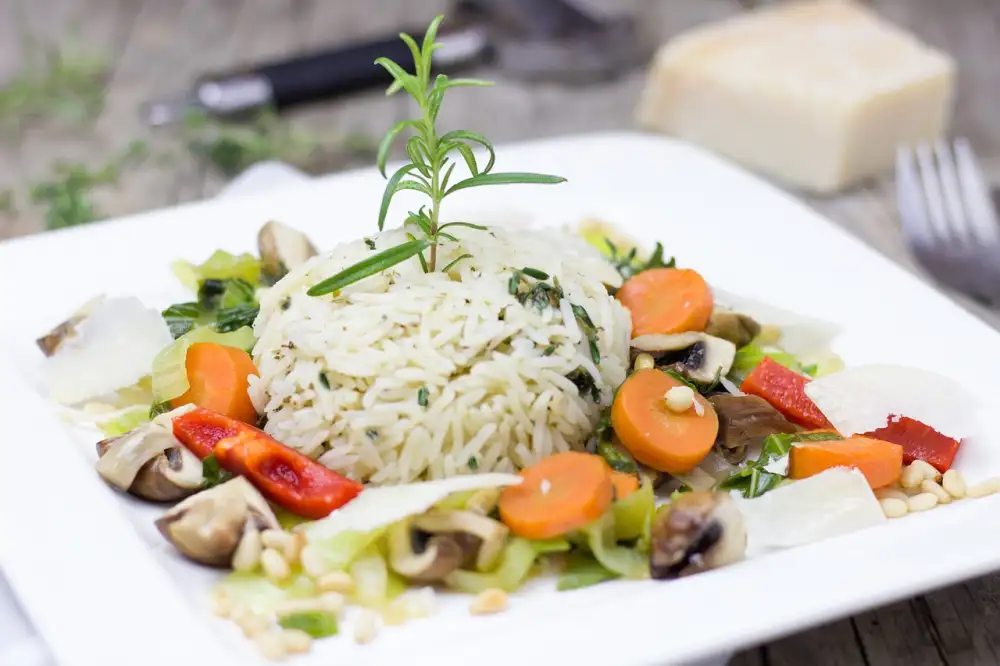Mastering the Art of Risotto: A Delectable Italian Rice Dish Recipe to Elevate Your Culinary Skills

Risotto, a classic Italian dish, is a creamy and luxurious rice-based dish that has captured the hearts of food enthusiasts worldwide. Known for its rich texture and depth of flavor, risotto is a versatile dish that can be customized with various ingredients to suit different palates. The key to a perfect risotto lies in the technique of slowly cooking Arborio rice to achieve a creamy consistency while maintaining a slight bite to the grains. Whether served as a comforting meal on its own or as a side dish to complement meats and vegetables, risotto is sure to impress even the most discerning diners with its decadent taste and elegant presentation.
History and Origin of Risotto
Risotto, a creamy and luxurious Italian rice dish, has a rich history dating back to the 14th century in northern Italy. Its origins can be traced to the region of Piedmont, where rice paddies were abundant. The word "risotto" itself is derived from the Italian word "riso," meaning rice. Initially, it was considered peasant food due to the affordability and accessibility of rice. However, over time, risotto gained popularity among the aristocracy for its versatility and delicious flavor profiles. Today, risotto is celebrated worldwide for its comforting texture and ability to showcase a wide range of ingredients and flavors.
Essential Ingredients for Making Risotto
When it comes to making a delicious risotto, the key lies in using high-quality ingredients. The essential components for a classic risotto recipe include Arborio rice, which is a short-grain Italian rice known for its creamy texture when cooked. Another crucial ingredient is good quality chicken or vegetable broth, as it serves as the base for the risotto's flavor profile. Butter and olive oil are used to sauté the rice and add richness to the dish. Shallots or onions provide a savory base, while white wine adds acidity and depth of flavor. Lastly, Parmigiano-Reggiano cheese is grated over the finished risotto to enhance its creaminess and umami taste. By using these essential ingredients in your risotto recipe, you can elevate your dish to culinary perfection.
Step-by-Step Guide to Cooking Perfect Risotto
1. Heat a large saucepan over medium heat and add butter or olive oil.
2. Sauté finely chopped onions until translucent, then add Arborio rice.
3. Stir the rice for about 2 minutes until it is lightly toasted.
4. Pour in a splash of white wine and stir until absorbed.
5. Begin adding hot broth, one ladle at a time, stirring constantly until absorbed before adding more.
6. Continue this process for about 18-20 minutes until the rice is creamy but still slightly al dente.
7. Remove from heat and stir in grated Parmesan cheese and any additional ingredients like cooked mushrooms or seafood.
8. Let the risotto rest for a few minutes before serving to allow flavors to meld together perfectly.
Variations and Flavor Combinations for Risotto
When it comes to risotto, the flavor possibilities are endless. While the classic recipe calls for ingredients like butter, onion, white wine, and Parmesan cheese, you can get creative with various additions to elevate your dish. Some popular variations include mushroom risotto with porcini or wild mushrooms, seafood risotto with shrimp or scallops, and asparagus risotto with fresh green asparagus spears. Additionally, you can experiment with flavors like truffle oil, lemon zest, sundried tomatoes, or even saffron to add a unique twist to your risotto. Don't be afraid to mix and match ingredients to create your own signature risotto masterpiece!
Tips and Tricks for Achieving the Best Risotto Texture
To achieve the perfect risotto texture, it's essential to use the right type of rice. Arborio, Carnaroli, or Vialone Nano are ideal choices due to their high starch content, which helps create that creamy consistency. Another key tip is to gradually add warm broth to the rice while stirring constantly. This slow addition allows the rice to release its starches slowly, resulting in a velvety texture. Additionally, make sure not to overcook the risotto as it should be al dente with a slight bite to it. Lastly, finishing off with a knob of butter and a generous sprinkle of Parmesan cheese will enhance the creaminess and richness of your risotto.
Serving Suggestions and Garnishes for Risotto
When it comes to serving risotto, presentation is key to enhancing the overall dining experience. A classic way to serve risotto is by placing a generous portion in the center of a plate or bowl and garnishing it with a drizzle of high-quality olive oil, freshly grated Parmesan cheese, and a sprinkle of chopped fresh herbs like parsley or basil. For added texture and flavor, consider topping your risotto with crispy pancetta, sautéed mushrooms, roasted cherry tomatoes, or grilled shrimp. Additionally, you can experiment with different garnishes such as truffle oil, lemon zest, microgreens, or toasted pine nuts to elevate the dish further. Remember that a visually appealing presentation will not only entice your taste buds but also impress your guests with your culinary skills.
In conclusion, mastering the art of risotto is a rewarding culinary journey that requires patience, practice, and precision. By understanding the history and essential ingredients, following a step-by-step guide, exploring variations in flavors, and incorporating tips for texture perfection, you can elevate your risotto-making skills to new heights. Remember to experiment with different ingredients and techniques to create unique and delicious risotto dishes that will impress your guests and showcase your culinary creativity. So grab a wooden spoon, some Arborio rice, and let the magic of risotto unfold in your kitchen!
Published: 30. 03. 2024
Category: Recipes



